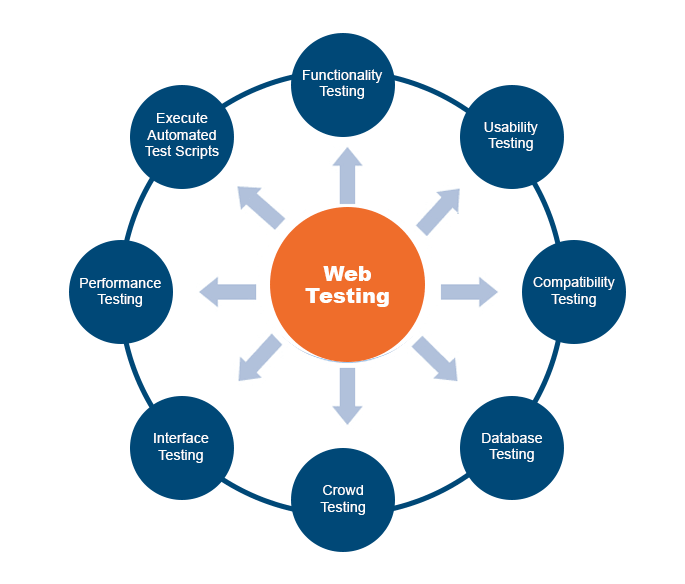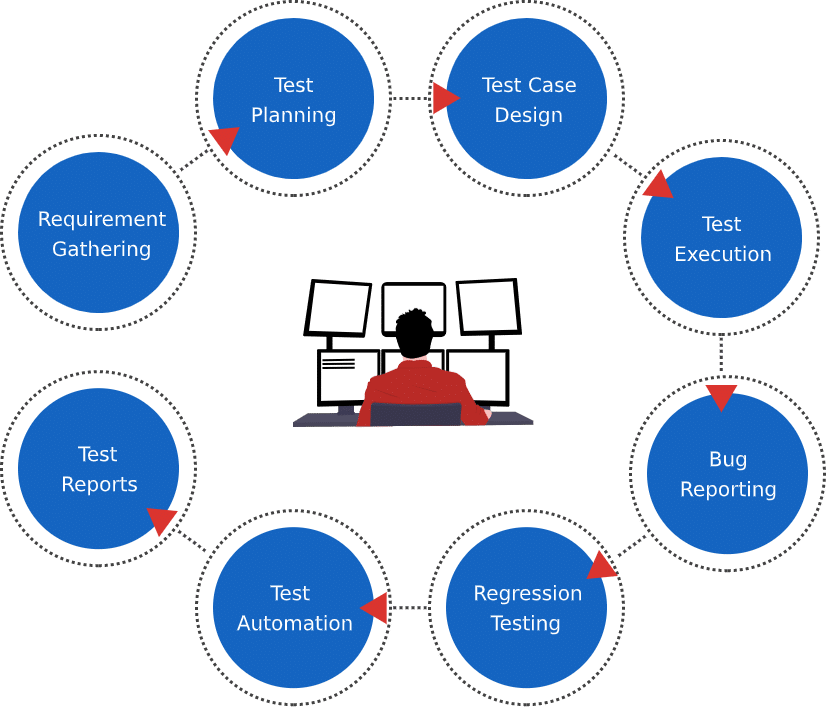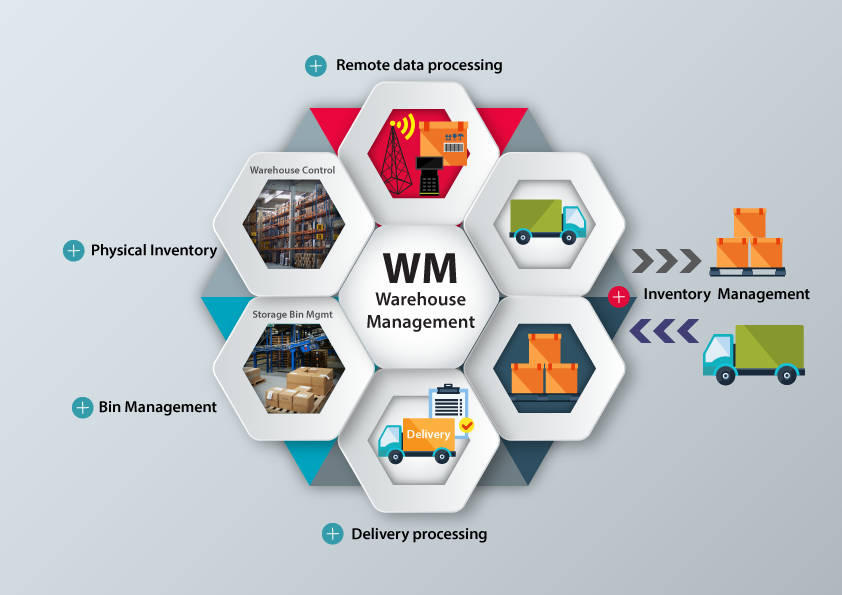The process of web testing is used to certify that a website application can fulfill the requirements of usability, security, specific functionality, visual, performance criteria, and accessibility. Web testing is condemning the accomplishment of application-catching crucial bugs before the shift of code to production. Web testing can be divided into several components comprising but not restricted to:
- Functional testing
- Usability and visual testing
- Performance and load testing
Database testing, interface testing, compatibility testing across browsers, etc are also a part of web testing.
Table of Contents
Types of testing used in Web Testing Software

Functional testing
Functional testing makes sure that users approaching a website have access to specific functions such as signing up to an account, adding an item to the wishlist, or submitting a form. Every action initiated by a user needs to be checked to confirm that the product is performing as elucidated in a specification. There are multiple kinds of checks or ‘tests’ that require to be performed such as:
Simple tests
Simple tests involve checking your navigation points or links are initiated accurately to designated URLs. Testers should go through all links on a webpage to confirm there are no broken links.
Complex forms
These tests make sure user inputs are accepted, users can deposit forms, and forms emerge in a database. Salesforce accepts specified inputs. For illustration, what are the consequences if a user skip filling out a necessary column within a form?
Business workflows
Business Workflows test mainly focuses on end-to-end workflow business situations. A scenario may consist when you visit Flipkart, look for an item, scroll through a few alternatives, check the reviews, perform a price comparison, save it to a cart, and finally checkout. This is a complete workflow that requires to be checked, at every platform, to confirm if it is suitable for the entire customer’s journey.
Visual and usability testing
Usability has become a crucial element for teams designing web applications. Visual testing is performed to make sure a website is visually compatible, especially across different portable devices, breakpoints, or browsers. It can be performed either by testers or even a small focus team. Now, you might be wondering why it matters. Well, when a user reaches your website from whatever device they find convenient to use, you are responsible to confirm that your users are having not only a compatible experience but also, the experience you planned for them to have.
Performance testing
When users navigate your portal, performance testing assists in confirming that the website is capable of behaving as expected. A website is expected to offer a flawless user experience even if a user accesses a company’s website at 2 am on a Monday, or 11 pm on a Friday. A company’s web experience should not compromise two points – missing out on generating income or their brand reputation.
Top 10 Web Application Testing Tools for 2022

Different kinds of automated testing tools are available for web applications but, we have shortlisted the best ten web application testing tools.
WebLOAD
WebLOAD is a web application performance testing tool. It is efficient for web-hosted applications that denote the load management capacity of the application. There is strong scripting potential attached with the tool that helps in simplifying complex testing. Additionally, with WebLOAD, you can also elucidate the challenges, performance aspects, and expected drawbacks in your application. It is a sufficient tool that can help you in securing the demanded response effectiveness for your web application. Moreover, this web application performance testing tool is also combined with Jenkins, Selenium, and other tools to intensify its testing strength.
Acunetix
Acunetix is an automated platform for web application security testing. This tool is integrated with a security scanner within. It is capable of locating even the minor susceptible of more than 5000 web applications. It works well with almost all kinds of web application variants such as SQL Injection, XSS, HTML5, JavaScript, and others. Additionally, this tool possesses convenient functions to put forward the threats and come up with reports accordingly. Along with this, the Acunetix web testing tool can also amalgamate the test outcomes with other platforms or tools.
Netsparker
Netsparker web application testing tool is well-known for its accurate results. It also possesses a security scanner installed to find out the minor and major inadequacies in almost all web APIs. Netsparker tool recognizes the loopholes and analyzes whether they are right or wrong. This assists you in saving time. With Netsparker, users are free from the burden of manually checking and rectifying every traced loophole after the scan. Netsparker web testing tool can be used either as an online service provider or as Windows software. The functions and the potency remain the same in both versions.
Test IQ
Test IQ follows a sequence of steps to assist you in analyzing your web applications. It makes sure that your web application operates flawlessly on all devices browsers or devices without any chances of errors and bugs. The apps are studied under real-world scenarios over Test IQ. This process is referred to as crowd testing. It identifies the application’s real potential and allows you to find the loose ends to operate on. Web applications can be made better to offer a world-class user experience. This can be done with the correct knowledge of creating and rectifying aspects. Most of the companies are now relying on the effectiveness of the Test IQ web testing tool to assist them with a better and faster performance of their web applications. The added features of the Test IQ tool comprise faster releasing after the testing practices, real device testing to find the core of the problems, and feedback from real humans.
Experitest
Experitest assists the users to analyze web applications over 500+ devices at once overcloud. Both manuals, as well as automated cross-browsing tools used to test the web applications, are available in Experitest. Experitest offers you the adequacy test of the application on any app. Plus, it is combined with Selenium and Appium for consistent outcomes. The testing pattern of the Experitest web application tool performs in real-time. It also debugs the operations for better results. Experitest is capable of running over 100 tests at the same time, parallel. Along with that, it offers you the benefit of visual testing so that you can predict the efficacy of UI responsiveness over distinct resolutions.
Lambda Test
Lambda Test tool serves the purpose of confirming that all the web application elements such as HTML5, CSS, and others function flawlessly on all devices. The testing pattern of visual, manual, as well as progressive results or automated testing, is followed by this tool. Lambda web testing tool utilizes cloud infrastructure to operate multiple tests at a single time in a parallel manner.
Selenium
When it comes to automated testing tools for web applications, Selenium is an all-time preferable tool for testers. Selenium is well-known as one of the perfect regression testing tools that function flawlessly over several platforms and browsers. The best advantage of Selenium is its automated testing aspect. There are several individual tools amalgamated within it. Every tool under Selenium is designed to manage distinct areas of web application testing. The four components of Selenium include Selenium Web Driver, Selenium Grid, Selenium RC, and Selenium IDE.
Watir
The term Watir stands for Web Application Testing in Ruby. Watir has a plus point that it analyzes web applications in the same manner as humans do. This testing tool uses doctrines such as form filling, validating texts, clicking links, and other perspectives to perform real-time web application testing for recognizing its major drawbacks. It is compatible, lightweight, and simple to use. It works flawlessly on a diverse range of browsers or platforms.
Ranorex Studio
Ranorex fulfills the aim of maximizing the resources to initiate automated testing practices. Ranorex Studio is the perfect tool to start with end-to-end testing by utilizing real devices or simulators or real devices for more crucial results. It works consistently with every type of browsers such as Chrome, Microsoft Edge, Safari, and others.
Serenity
The serenity testing tool confirms that the tests designed are simple for maintenance. They make sure that the tests are quite flexible for a wide range of applications. Additionally, Serenity offers detailed test reports to provide perception regarding the web application. Also, the Serenity testing tool keeps a check on the progress of all your projects.
Conclusion
To conclude, Website testing is important for finding out the core loopholes of your website. You are required to test every component to trace the issues present in it. Then, you need to rectify those issues to ensure the flawless working of your website. It is your responsibility to ensure that the end-users do not struggle with any kind of hindrance when browsing your website. The more web testing, the fewer the bugs. The reduced bugs lead to satisfied users.
The web testing apps assist you in tracing the existing loopholes of a website at an earlier development stage. You need not spend a lot of time rectifying these bugs. These were some of the best available options for web application testing software available in the industry. However, you can find other alternatives as well. If you have any queries about the same, kindly connect with us at SaaSworthy.
Also Read
Guide to using Top Patch Management Software in 2022
An Extensive Guide to Objectives and Key Results Software in 2022






